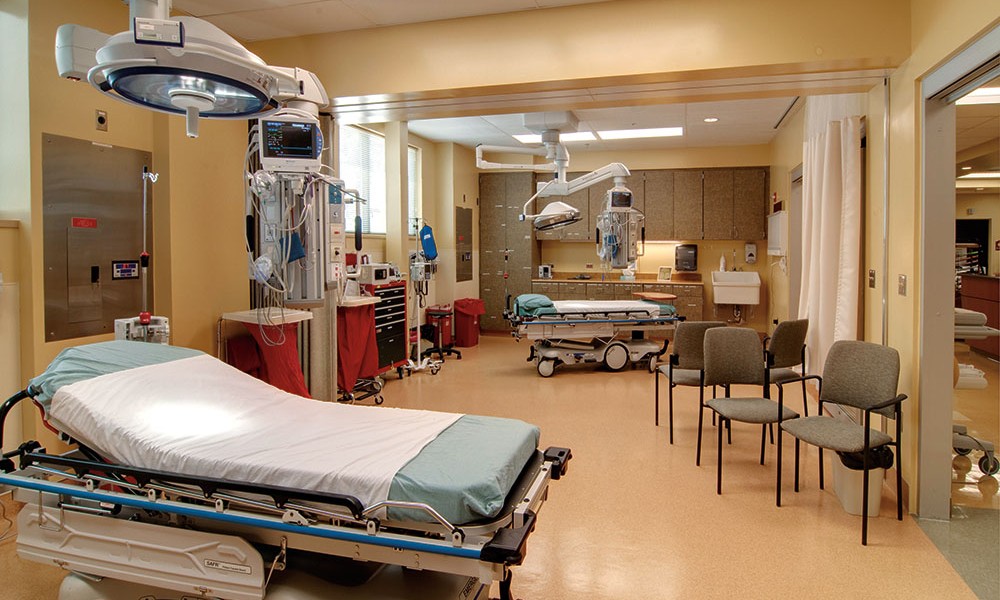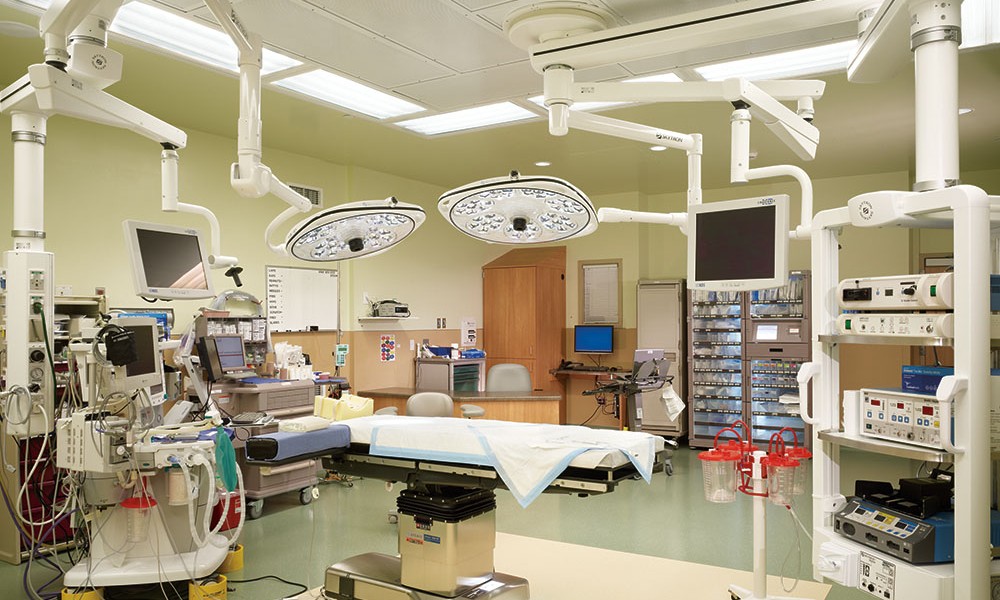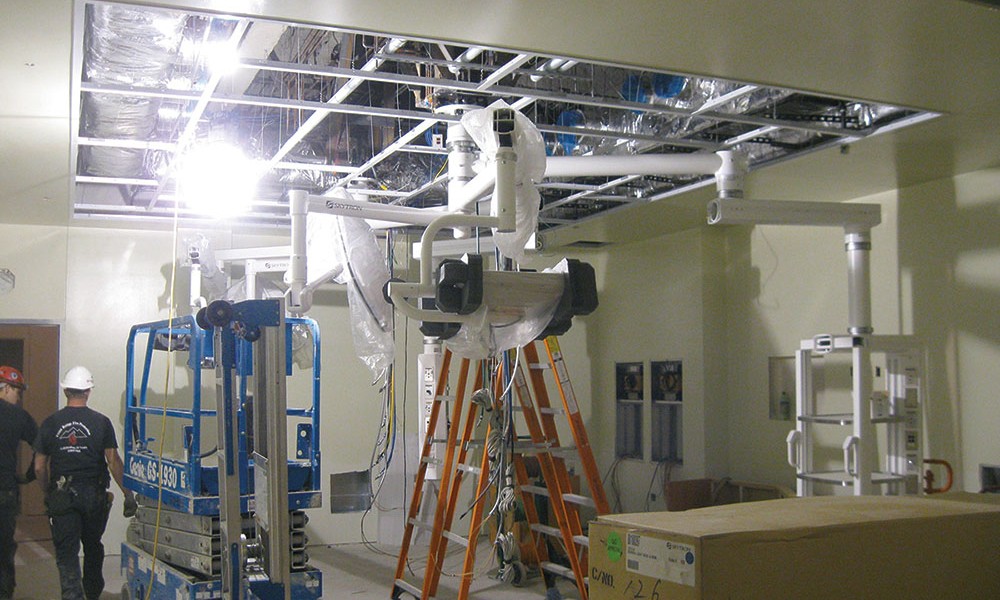Maximizing Value, Maximizing Resources: Unifying design and construction services through construction manager/general contractor delivery
The challenges of developing modern medical facilities are immense. Hospitals large and small must continually consider changing patient needs, innovations in the practice of medicine and myriad differing economic factors before investing financial resources in facility improvements. To best understand the multitude of variables associated with design and construction, medical facility managers often engage in an integrated development process to achieve better spatial efficiency and cost-effective facilities.
A key strategy for unifying design and construction teams is the construction manager/general contractor (CM/GC, also known as CMAR) delivery methodology, which presents a compelling model for maximizing team expertise and project resources. Though general contractors and architects are contracted independently, owners are able to leverage joint expertise through a collaborative process that increases design and construction efficiency and enhances the finished facility in a variety of ways.
“CM/GC is really a win-win for owners, builders and the design team,” said Jason Heustis, a project manager with AP Healthcare, a team of construction professionals with offices across the United States. “Having a construction manager on board early affords owners and designers the benefit of our extensive knowledge of building materials, construction costs and technologies, strengthening design decisions and increasing the value of each dollar invested.”
Measures of success
As an example of CM/GC success, Huestis points to the new Rangely District Hospital, a rural acute care/critical access hospital completed in association with design partner, Davis Partnership. This 72,367-square-foot hospital was constructed for approximately $23 million, replacing the second oldest hospital in Colorado, a facility that had been determined to be non-code compliant and unfit for further renovation or expansion.
On the Rangely project, once Davis Partnership’s initial design concept was established, AP Healthcare was selected to provide construction management. Value analysis and constructability reviews are among key benefits of early contractor involvement that significantly enhance the reliability of cost estimates while adding value and quality to the finished building.
“We prefer building value into the project during preconstruction rather than value engineering things to get the project back in budget during construction,” added AP Healthcare Preconstruction Manager Eric Dimmick. AP Healthcare and Davis Partnership’s significant history of CM/GC collaboration has generated close to $300 million worth of medical construction over nearly 30 years. That foundation of trust ensures holistic design decisions include the clients’ near- and long-term financial interests, design and construction innovations, user needs and, most importantly, the best possible patient care.
Another advantage of CM/GC comes from integrating select subcontractors in a design-assist capacity. Subcontractor input on system inter-compatibility, durability, lifecycle and operations costs for items like HVAC, building automation systems and other heavy mechanical equipment confirms particular systems will function harmoniously and increases the reliability of cost estimates.
“We are seeing great benefit at the intersection of building information modeling and design-assist coordination with curtainwall, glazing and structural steel subcontractors,” said J.D. Dreyer, AIA, ACHH, a principal with Davis Partnership. “Using the BIM model as a fabrication tool expedites the design, detailing and shop drawing process for many complex building components and results in expedited construction and reduced lead times.”
Occupied renovations of medical facilities present the possibility of many unforeseen conditions, which further complicate design and construction. Examples include inadequate or poorly coordinated documentation of previous improvements, continuously evolving code requirements and highly specialized equipment requirements related to power, space and ventilation.
A key facet of preconstruction methodology for any renovation is a discovery process designed to identify potential complications within the scope of work before they require non-budgeted expenditures to correct.
“Design teams are generally working from a set of as-built drawings that are rarely perfect,” said Heustis. “Minor discrepancies between the as-built drawings and actual in-place conditions can have a substantial impact on cost, constructability and the tie-ins and shutdowns required to seamlessly transition spaces from one purpose to another. We believe it is in everyone’s best interest to take as-built documentation a significant step further by actually getting into the unseen spaces above ceilings and behind walls as much as possible.”
Maintaining seamless operations
Code compliance, power requirements deficiencies, ductwork and plumbing layout inaccuracies and the possibility for structural conflicts with proposed systems are among common issues uncovered during building investigations. A key difference between the architect’s and contractor’s obligations is that many potential construction hurdles actually lie beyond the limits of the design documentation. While the architect is largely concerned with resolving a scope of work within the parameters of cost and program, the contractor is challenged to consider the project’s interface with adjacent areas, frequently including the floors above and below the construction zone. A carefully sequenced construction phasing plan is often required to keep the facility fully operational while construction is ongoing.
“It’s important to never give patients any sense that the hospital is under construction,” said Steve Olien, a superintendent with AP Healthcare. With more than 16 years of experience in medical construction, Olien has encountered many challenging renovations. One of the most challenging was the 7,600-square-foot renovation/addition to the Estes Park Medical Center, which entailed expanding the hospital’s existing emergency department without disrupting its vital 24/7 services for a remote mountain community.
On a project like Estes Park, the complexities of working in an occupied hospital are magnified to a microscopic level by the possibility of construction-related infections. Maintaining maximum awareness and attention to the control of debris, dust, noise, vibrations and other environmental contaminants are a conscientious focus.
“We try to really work through the details of every issue with owners and architects while solutions are still on paper rather than in the field,” said Olien. “As the builder we don’t want to simply expose problems, we’ve got to identify solutions and game plan implementation scenarios. The solution must consider costs and schedule impacts and lead owners toward solutions that result in the most positive benefits and the least negative impacts.”
The most recognizable benefits of the CM/GC methodology include a positive path and camaraderie between the owner, the architect and the contractor. In the case of medical construction and design, the prospect of maintaining a contractual separation between the design and construction team while still unifying the work efforts in a collaborative process helps the owner to fully realize both a complete vision and best value.
Posted March 26, 2014
More Articles:
- Coverings 2024
Apr 22, 2024 – Apr 25, 2024 - Hospital, Outpatient Facilities & Medical Office Buildings Summit
Apr 25, 2024 – Apr 25, 2024 - CxA Workshop & Exam
Apr 29, 2024 – Apr 30, 2024 - EMP Seminar & Exam at CxEnergy 2024
Apr 29, 2024 – Apr 30, 2024 - CxEnergy
Apr 29, 2024 – May 2, 2024 - PHCC West 2024
Apr 29, 2024 – May 2, 2024 - Lean in Design Forum 2024
May 1, 2024 – May 2, 2024














